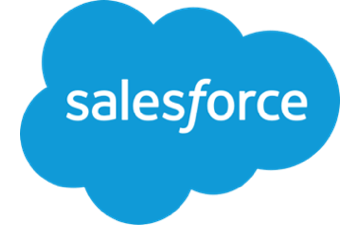For the purpose this team project, we have chosen to focus our CRM research on using Salesforce within the context of UPMC. Salesforce is a cloud-based application (Salesforce, n.d.). And, with over 150,000 companies using Salesforce, it is also credited as the world’s largest CRM system (Salesforce, n.d.).
Salesforce is a CRM tool available as a cloud Software as a Service (SaaS). It is a collection of different cloud applications that are provided as cloud service, which means to simply log in and start connecting to the customers.
Salesforce also provides the unified platform services that helps companies spearhead to success (Salesforce, n.d.). The platform services allows companies to integrate personal applications with Salesforce applications. They can extend CRM with a wide variety of pre-build applications, while enjoying a robust and flexible security features trusted by companies around the world (Salesforce, n.d.). Some of the pre-built applications are:
- Mobile : Run your business from your phone. Built mobile-first, the Salesforce Platform lets you do everything on the go with this app.
- AppExchange : Leverage an ecosystem of more than 3,000 apps and components from the world’s largest business app marketplace.
- Integration Services : Bring any kind of data — even legacy data from Oracle and SAP — together for a complete view of the customer.
- Analytics : Now everyone can get insights with data from any source, on any device.
- Internet of Things : Connect data generated from devices, apps, and products to your CRM.
- Collaboration : Drive productivity throughout the business with enterprise collaboration tools.
- Search : Help employees find anything, from any file source, with intelligent search.
- Identity : Create a single federated identity across all your cloud apps. It’s like Single Sign On feature.
- Code : Give developers the power and flexibility to build, scale, and manage apps on Salesforce.
- Metadata Architecture : All customizations are specified as metadata, so you get automatic upgrades that don’t break anything.
- Multitenancy : Focus on your business, not technology infrastructure.
© Copyright 2017 Salesforce.com, inc. All rights reserved.
Various trademarks held by their respective owners. Salesforce.com,
inc. The Landmark at One Market, Suite 300, San Francisco, CA 94105,
United States
Salesforce will be helpful in integrating many different services provided by UPMC, and there is a precedent for using Salesforce as part of a healthcare system. For example, Mount Sinai currently employs Salesforce within the context of their healthcare system (Salesforce, 2017). Salesforce within a healthcare system, like UPMC, can be used for all facets of customer relationship management within the system, including connecting providers and organizations across the healthcare system, gathering insurance data, collecting customer experiences, PR and marketing, and fundraising and grants management (Taber, 2009). It is observed that many organizations, such as Uber, take leverage of data to determine their business strategy (Gallaugher, 2016), we expect the same from Salesforce in UPMC.

References:
Gallaugher,
J. (2016, July). Information
Systems: A Manager's Guide to Harnessing Technology. version 5. Retrieved from
https://scholar.flatworldknowledge.com
Salesforce.
(n.d.). What is Salesforce? Retrieved September 14, 2017, from
https://www.salesforce.com/products/what-is-salesforce/
Salesforce.
(2017, March 15). Mount Sinai Health System Taps Salesforce to
Transform Healthcare for More Than 350,000 Medicaid Recipients in New
York City. Retrieved September 14, 2017, from
https://www.salesforce.com/company/news-press/press-releases/2017/03/170315.jsp
Taber, D. (2009, July 24). How to Use Salesforce.com for
Non-Revenue Purposes. Retrieved September 14, 2017, from
https://www.cio.com/article/2426084/data-center/how-to-use-salesforce-com-for-non-revenue-purposes.html
Wailgum, T. (2017, July 14). What is a CRM system? Your guide to
customer relationship management. Retrieved September 14, 2017, from
https://www.cio.com/article/2439505/customer-relationship-management/customer-relationship-management-crm-definition-and-solutions.html


No comments:
Post a Comment